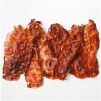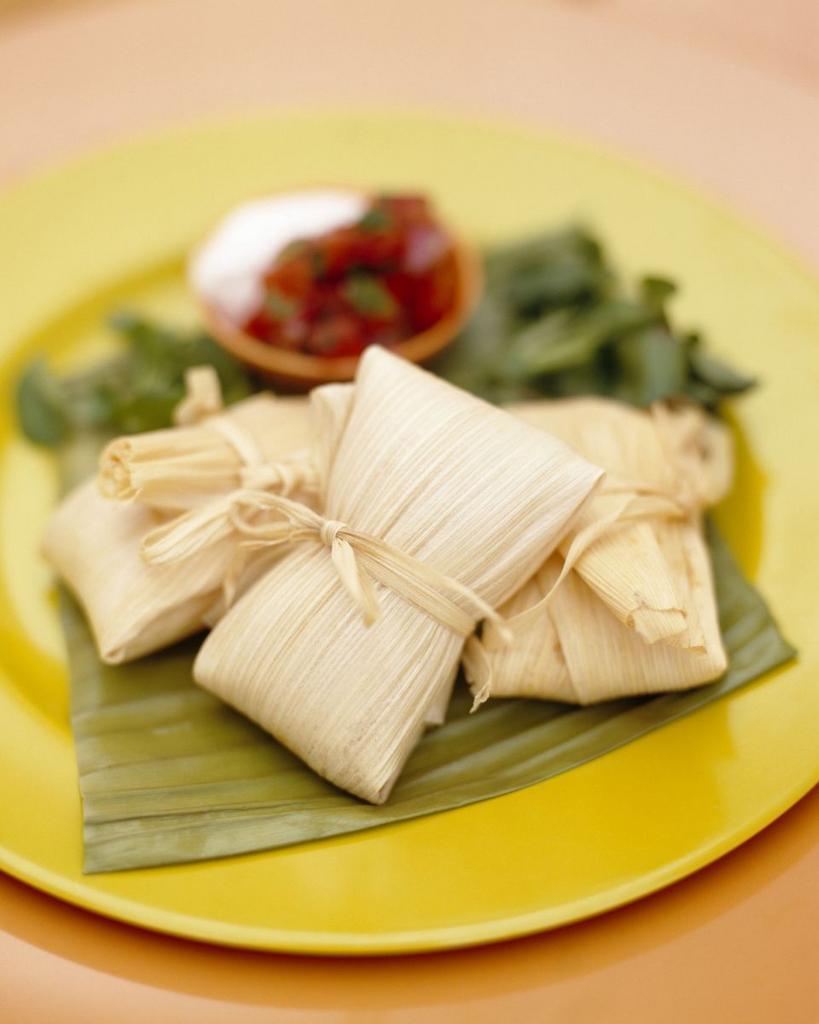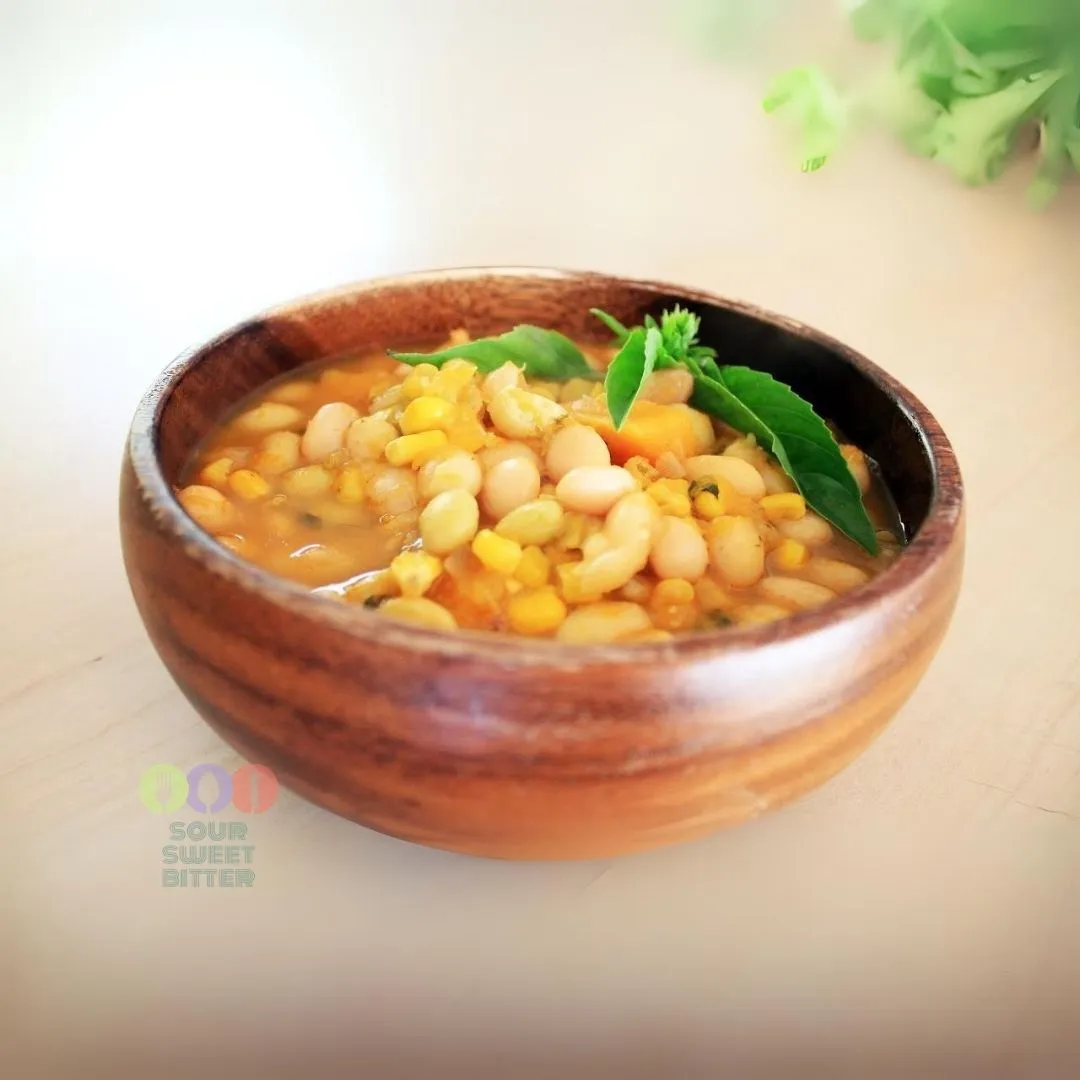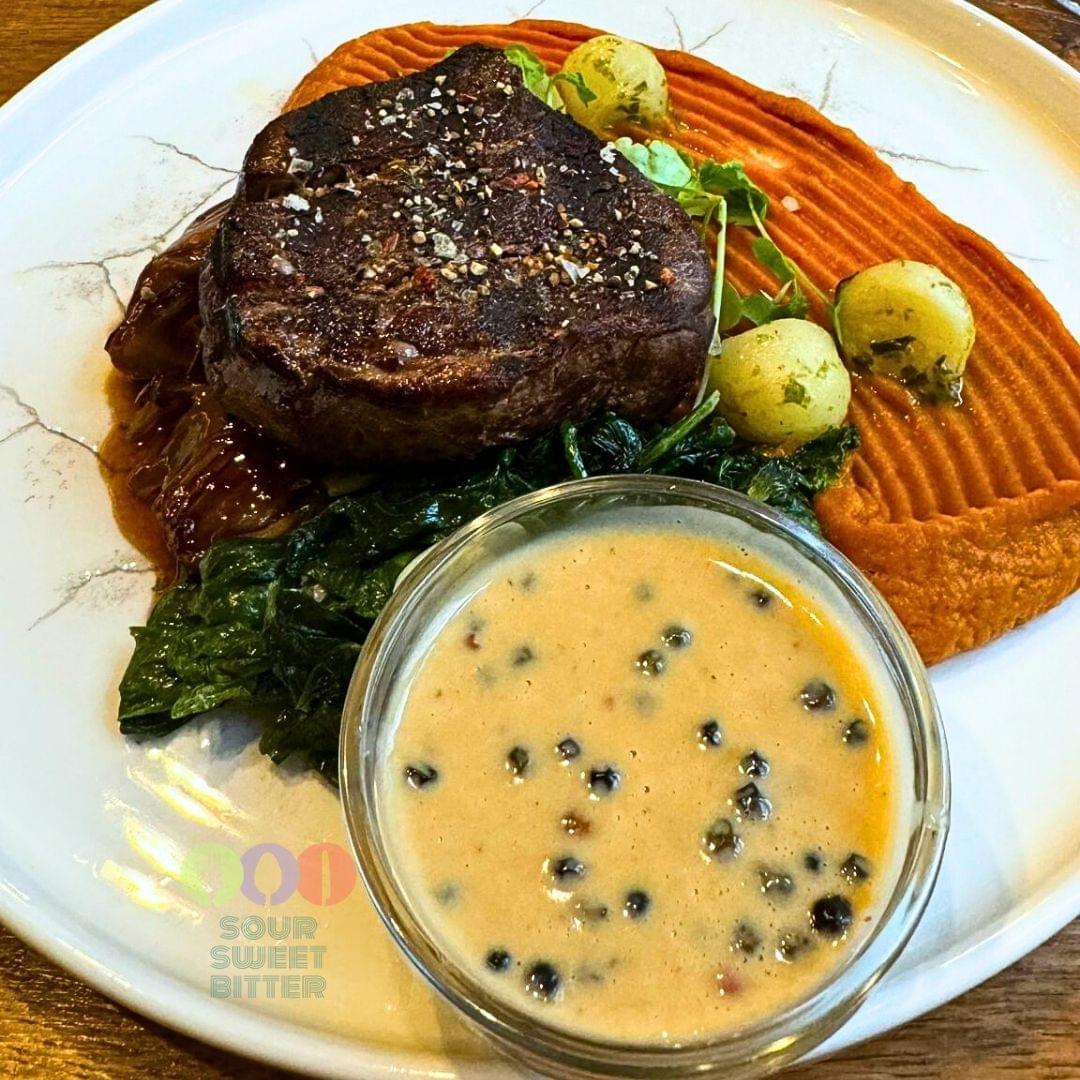Rouladen: Germany’s Heartwarming Dish Through the Ages
Rouladen is a traditional German dish cherished for its hearty flavors and rich ingredients. Made from thin slices of beef filled with bacon, onions, mustard, and pickles, this dish is rolled and braised until tender. Known for its comforting taste, Rouladen is a staple at family gatherings, festive holidays, and special occasions, preserving its place in German culinary traditions.
A Historical Journey Through German Cuisine
The origins of Rouladen reach back to medieval Europe, when cooks rolled and stuffed meats to enhance flavors. This dish grew popular in the 19th century, initially among the upper class, and eventually became common in households across Germany. The slow-braising method tenderized tougher cuts of meat, making the recipe accessible to families of all backgrounds.
A Symbol of Tradition and Togetherness
In German culture, Rouladen represents family, tradition, and shared heritage. It’s often prepared on Sundays and during holidays, such as Christmas, when families gather for hearty meals. Preparing Rouladen involves family members in each step, from seasoning and rolling the beef to braising it. This collective experience strengthens bonds and celebrates tradition.
Regional Twists on a Classic Dish
The recipe varies slightly by region, highlighting the diversity of German cuisine. Some regions add herbs, while others may substitute pork for beef. However, the classic ingredients—bacon, pickles, and mustard—stay true to its roots, reflecting local influences while preserving authenticity.
Global Appeal and Enduring Popularity
Over time, German immigrants and food lovers have introduced this iconic dish to the world, where it has gained a place in international cuisine. Its balanced flavors of smoky bacon, tangy pickles, and smooth mustard have universal appeal, and it’s now found on menus in many German restaurants worldwide.
A Timeless German Classic
Rouladen’s enduring appeal comes from its versatility and comforting nature. Despite new culinary trends, it remains a cherished dish that bridges the past and present. For those exploring German cuisine, Rouladen offers a flavorful glimpse into German history and tradition.
Discover Traditional Recipes from Germany Discover Traditional Recipes from Europe You may like this also: Moroccan Harira 10 Traditional German Recipes You may like this also: Bulgarian Kavarma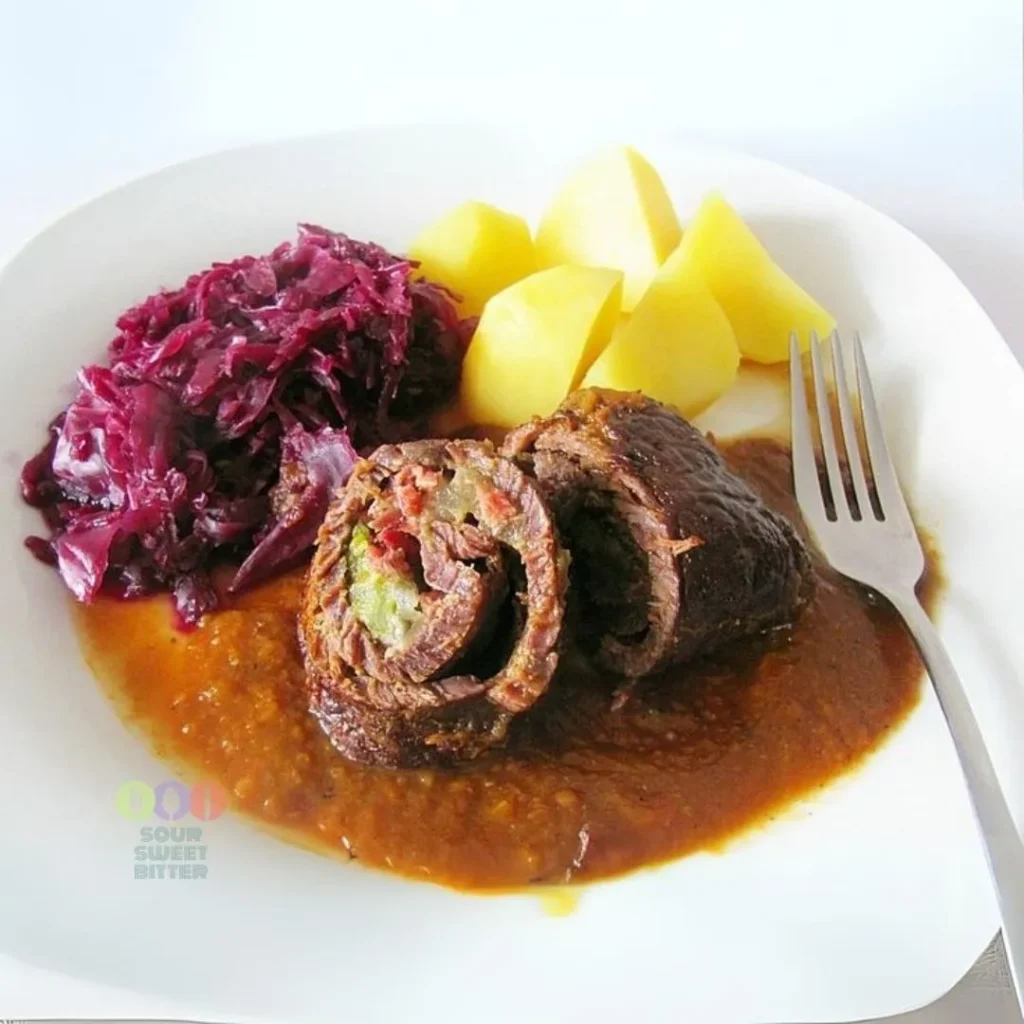
German Rouladen
Ingredients
For the Rouladen:
For Braising:
Instructions
-
Lay out each slice of beef and season lightly with salt and pepper. Spread a thin layer of mustard over each slice. Place a slice of bacon, a few onion slices, and a few pickle strips on top of each beef slice.
-
Starting at the narrow end, roll up each slice tightly and secure it with toothpicks or cooking twine.
-
In a large pot or Dutch oven, heat the oil over medium-high heat. Brown the beef rolls on all sides until golden brown. Remove the rolls and set them aside.
-
In the same pot, add any remaining onions, chopped carrots, and celery. Sauté until softened, about 5 minutes.
-
Pour in the red wine (if using) and scrape up any browned bits from the bottom. Add the beef broth and bay leaf.
-
Return the beef rolls to the pot, making sure they're mostly submerged in the liquid. Cover the pot and simmer on low heat for 1.5 to 2 hours, or until the beef is tender.
-
Remove the Rouladen and set them aside, keeping them warm. Strain the cooking liquid, discarding the solids, and return the liquid to the pot. Simmer until it’s reduced and thickened slightly. You can also thicken it with a cornstarch slurry (1 tbsp cornstarch mixed with 1 tbsp cold water) if desired.
-
Serve the Rouladen hot with the gravy poured on top. Garnish with fresh parsley.




